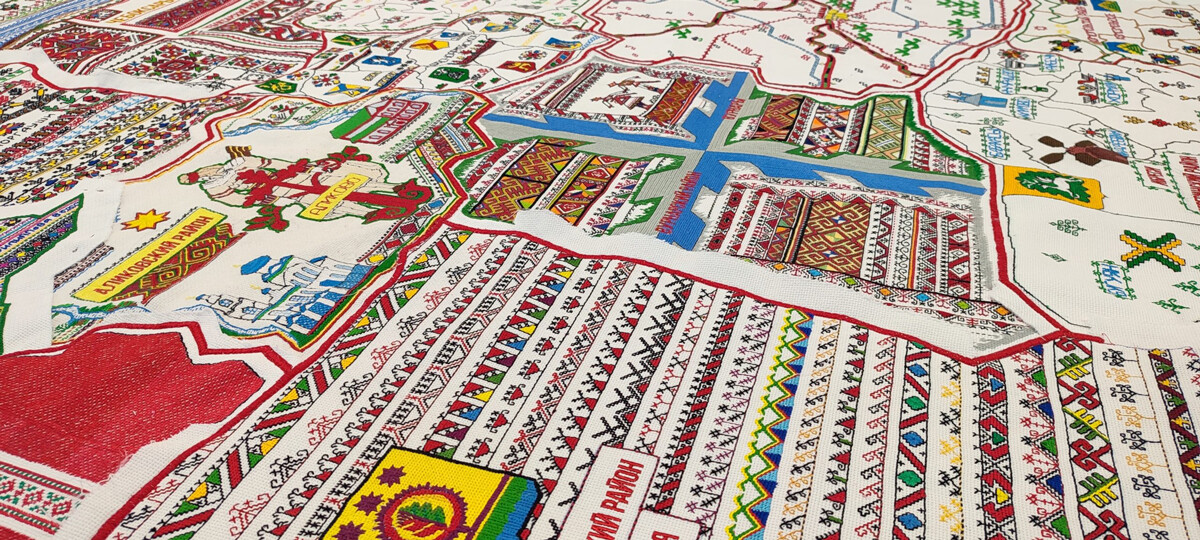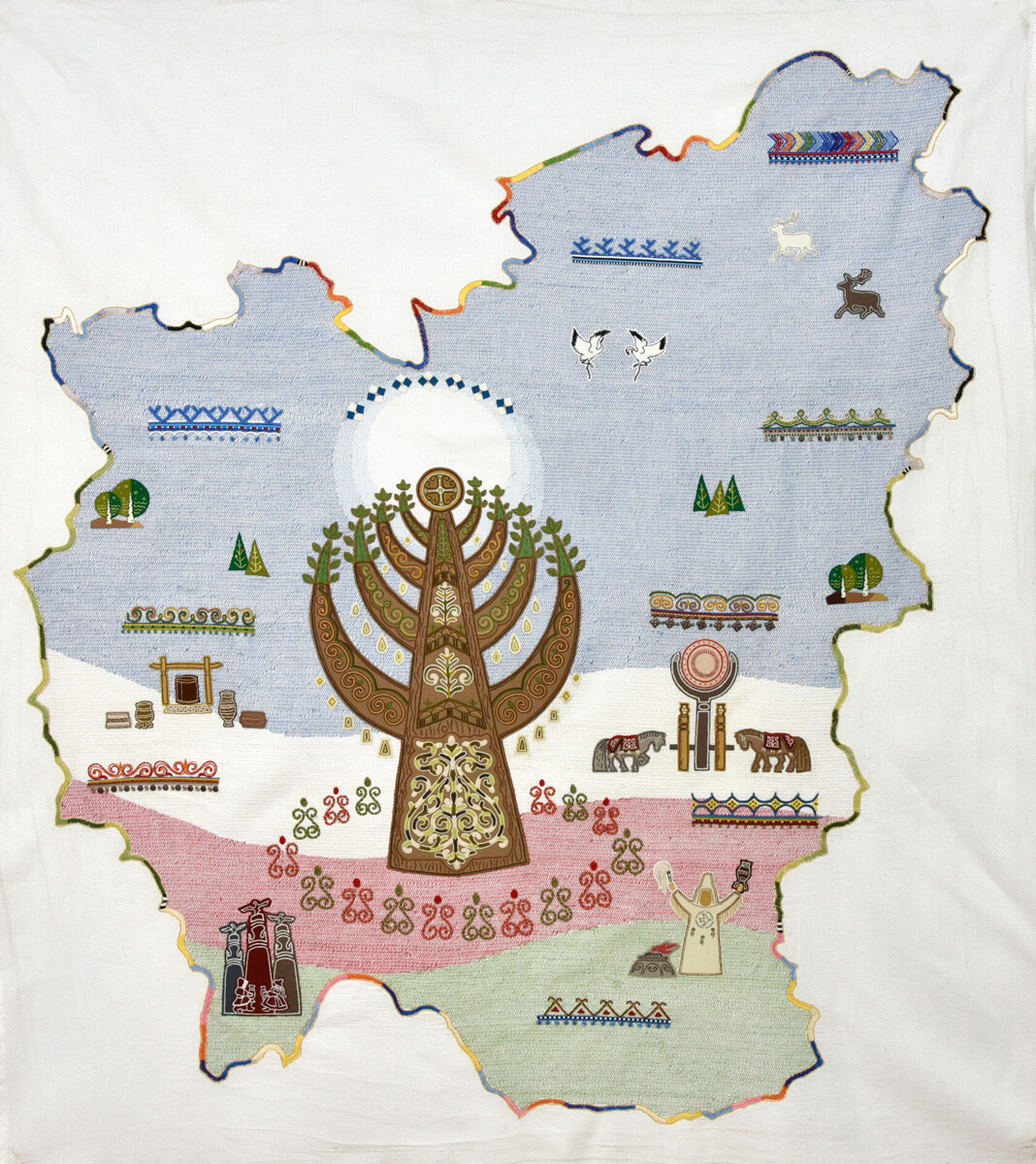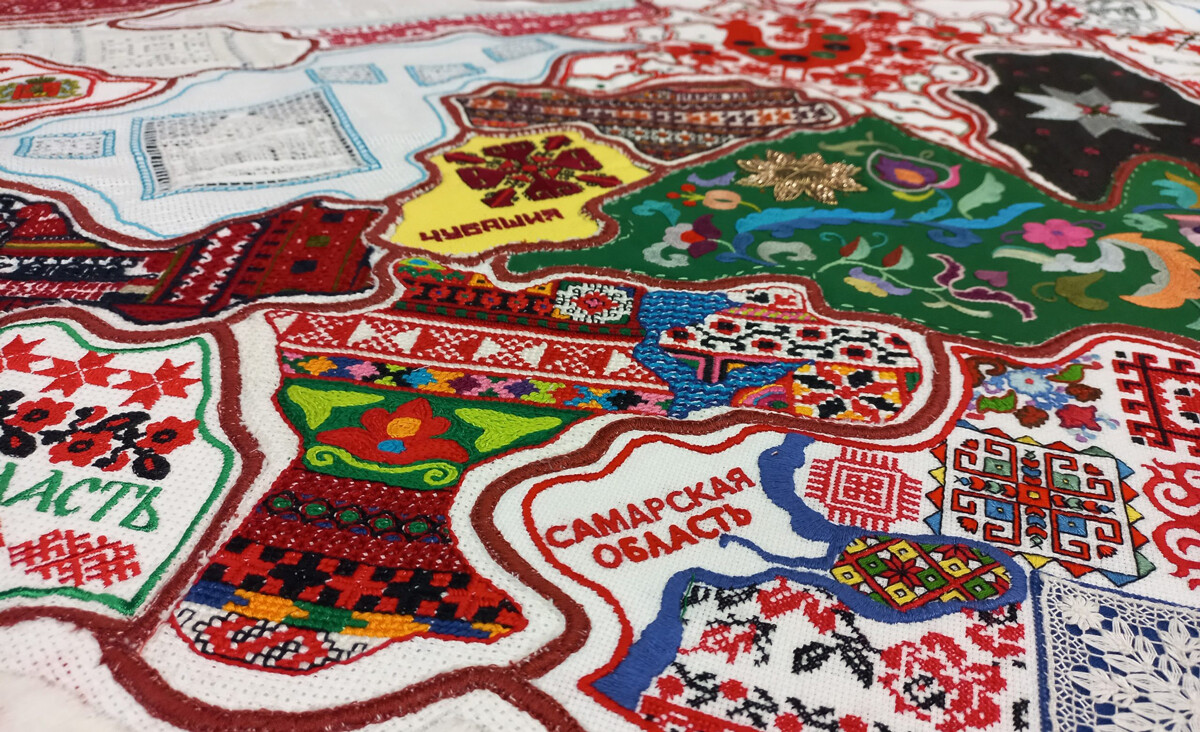This EMBROIDERED ethnographic map of Russia is out of this world! (PHOTOS)

You won’t find cities, mountains or forests on this map of Russia - simply because the different regions are depicted through local embroidery. In places, you can spot the general features of local landmarks outlined in stitches; elsewhere coats of arms and, in yet other places, whole ethnic groups or peculiar animals and birds.

This embroidered map of Russia was made in 2022 and is now on display at the Chuvash National Museum in Cheboksary. This republic in the Volga Region of Russia is often described as “the land of a hundred thousand embroideries”, because in no other place will you find such a wealth and variety of designs. A Day of Chuvash Embroidery is even celebrated on November 26.
From headdress to map
It all started with an embroidered ‘surpan’ - a type of women’s head cover, says museum director Irina Menshikova. “We decided to adorn the ends of this six-meter cloth with embroidery from different regions of Chuvashia. We sent strips of fabric to master embroiderers and then sewed it all together and presented it at the festival in 2020. There, people asked us: ‘And what are you going to do for next year?’ So we decided to embroider a map of Chuvashia.”
 The embroidered surpan.
The embroidered surpan.
Local craftspeople embroidered a map of Chuvashia back in 1937, but it was a geographical map with forests, settlements and roads. “We decided to make an ethnographic map. We sent pieces of suitably cut fabric to our regions and asked their craftspeople to embroider them in their traditional styles as they understood them. The main condition was not to go over the edges and to use hand embroidery.”
 Maps made in 1937 and in 2021.
Maps made in 1937 and in 2021.
The museum only learnt what the embroiderers had made when they submitted their work. One district had embroidered ancient designs, while another showed the ethnic groups living locally, while others still showed the mythical winged horse Urgamak and his warrior-hero master. The map delighted Embroidery Day visitors to such a degree that the leader of the republic proposed that an embroidered map of the whole country be made for June 12 - the run-up to Russia Day. The Chuvash National Museum prepared pieces of fabric of the right size and shape and dispatched them to embroiderers in all regions - and the latter were only too pleased to support the initiative.

Three suns, the tree of life and “diamonds”
More than 200 master embroiderers spent half a year working on the map. And, when they sent back their finished parts, it turned out that even the regions most distant from one another had practically identical symbols in their embroidery and in their culture as a whole.
 Chuvashia on the map.
Chuvashia on the map.
“In Chuvashia, for instance, our main symbol is the sun,” says Olga Kushmanova, head of the museum’s cultural and educational department. “There is a legend that three suns used to shine in the land of Chuvashia, but, with the passage of time, one of them turned into the moon and another split into pieces and became the stars.” And absolutely the same sun symbols were present in the work sent in by the Smolensk, Penza and Samara regions.
 Chukotka and Tomsk Region on the map.
Chukotka and Tomsk Region on the map.
On the maps of Ingushetia, Dagestan and Astrakhan Region, the solar symbol is different - it has three sunrays. And on the maps of Kamchatka, Chukotka, Magadan and Yamal, the “sun” is made out of beads with a fur edging. “Our ancient embroidery depicts all of creation and the life of the Evenki people,” is how local craftswoman Galina Bushuyeva, who has Evenki roots herself, describes the Magadan embroidery.
The indigenous peoples of the Far East, as it happens, also have legends about three suns.
 Yakutia on the map.
Yakutia on the map.
Another symbol common to many ethnic groups is the tree of life. The most noteworthy one is perhaps to be found on the embroidered map of Yakutia, which is adorned with symbolic “diamonds” (and not just diamonds) (you can read more here). And, on their tree, the master embroiderers of Bashkortostan have represented the peoples living in various parts of the republic. In the east of Russia, in the south of Volga Region and in the Urals, similar flowers and sprigs are to be seen - despite the fact that the regions are at a distance of thousands of kilometers from one another.
 Kamchatka on the map.
Kamchatka on the map.
Various animals can be spotted in the regions of Siberia. Of course, the northern reindeer are most frequently depicted, but, in Chukotka and on Kamchatka, you can also see the polar bear and brown bear, respectively. And Irkutsk Region is represented on the map by a peculiar beast, the Babr - according to legend, this was initially a tiger, but, a couple of centuries ago, a heraldic draftsman got the wrong end of the stick and drew a cross between a beaver and a weasel - in a word, an unfathomable, but memorable creature.
 Dagestan on the map.
Dagestan on the map.
Gold embroidery and lace
Of course, Moscow can be spotted on the map straight away - the embroiderers decided to depict the Moscow Kremlin framed in a pattern of gold thread. The same technique was also employed for the map of Karelia, on which the traditional headdress decorations of the Pomors were embroidered (our item on the Pomors can be found here).
 Moscow on the map.
Moscow on the map.
Vologda portrayed its region in the ‘Vologda glass’ technique - lace-like embroidery using white thread on a white base. Orenburg used designs taken from its local headscarves for the map.
 The part of the Volga Region.
The part of the Volga Region.
Inspired by the embroidered map of Russia, many regions are now making their own embroidered maps. The Cheboksary museum plans to display this collection in Summer 2023.
 In addition to the map, the craftsmen also presented the embroidered panels of their regions.
In addition to the map, the craftsmen also presented the embroidered panels of their regions.
Dear readers,
Our website and social media accounts are under threat of being restricted or banned, due to the current circumstances. So, to keep up with our latest content, simply do the following:
- Subscribe to our Telegram channel
- Subscribe to our weekly email newsletter
- Enable push notifications on our website
- Install a VPN service on your computer and/or phone to have access to our website, even if it is blocked in your country


